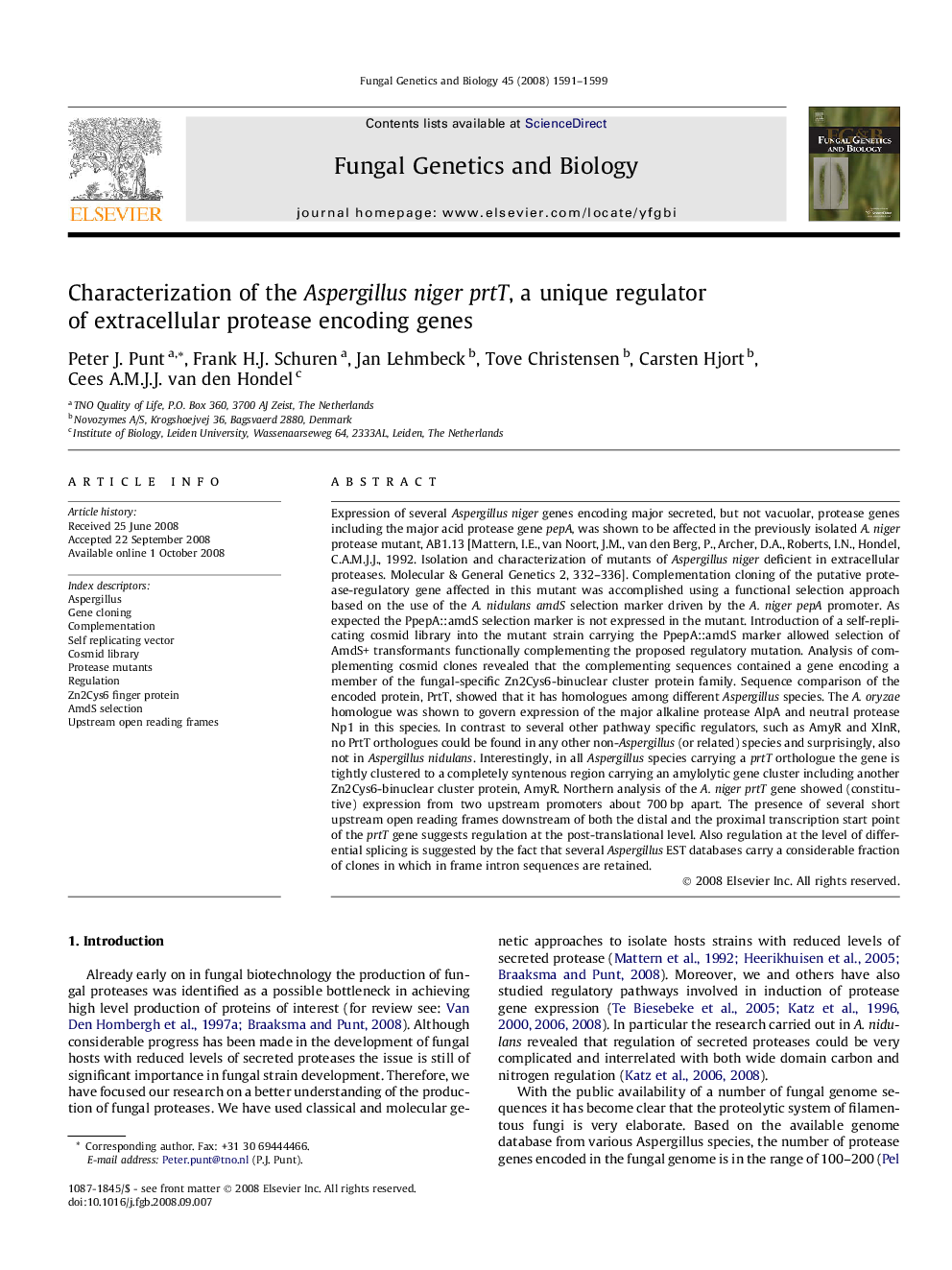| Article ID | Journal | Published Year | Pages | File Type |
|---|---|---|---|---|
| 2181472 | Fungal Genetics and Biology | 2008 | 9 Pages |
Expression of several Aspergillus niger genes encoding major secreted, but not vacuolar, protease genes including the major acid protease gene pepA, was shown to be affected in the previously isolated A. niger protease mutant, AB1.13 [Mattern, I.E., van Noort, J.M., van den Berg, P., Archer, D.A., Roberts, I.N., Hondel, C.A.M.J.J., 1992. Isolation and characterization of mutants of Aspergillus niger deficient in extracellular proteases. Molecular & General Genetics 2, 332–336]. Complementation cloning of the putative protease-regulatory gene affected in this mutant was accomplished using a functional selection approach based on the use of the A. nidulans amdS selection marker driven by the A. niger pepA promoter. As expected the PpepA::amdS selection marker is not expressed in the mutant. Introduction of a self-replicating cosmid library into the mutant strain carrying the PpepA::amdS marker allowed selection of AmdS+ transformants functionally complementing the proposed regulatory mutation. Analysis of complementing cosmid clones revealed that the complementing sequences contained a gene encoding a member of the fungal-specific Zn2Cys6-binuclear cluster protein family. Sequence comparison of the encoded protein, PrtT, showed that it has homologues among different Aspergillus species. The A. oryzae homologue was shown to govern expression of the major alkaline protease AlpA and neutral protease Np1 in this species. In contrast to several other pathway specific regulators, such as AmyR and XlnR, no PrtT orthologues could be found in any other non-Aspergillus (or related) species and surprisingly, also not in Aspergillus nidulans. Interestingly, in all Aspergillus species carrying a prtT orthologue the gene is tightly clustered to a completely syntenous region carrying an amylolytic gene cluster including another Zn2Cys6-binuclear cluster protein, AmyR. Northern analysis of the A. niger prtT gene showed (constitutive) expression from two upstream promoters about 700 bp apart. The presence of several short upstream open reading frames downstream of both the distal and the proximal transcription start point of the prtT gene suggests regulation at the post-translational level. Also regulation at the level of differential splicing is suggested by the fact that several Aspergillus EST databases carry a considerable fraction of clones in which in frame intron sequences are retained.
